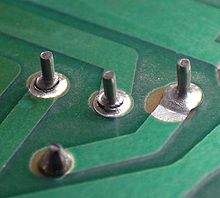First post, by dogchainx
- Rank
- Member
EDIT and thread UPDATE: THE FREAK'N WASH WORKED! The thing ACTUALLY BOOTS JUST FINE NOW! 😀 😀 😀
😒
So, this isn't a horrific loss, as I have a backup that works just fine. However....i freak'n love this motherboard...and i never use the word freak'n.
I've been enjoying Wing Commander a lot lately, and decided this last weekend before my life gets very busy with triplets, to play Wing Commander one last time. I turned on my 386 computer and it wouldn't boot. No beeps, no VGA, no nothing except power is turned on. Opening up the case, there was NO burn smell. It just didn't boot up. Here's a quick run-down of what I've done this morning:
1. Have the exact same spare motherboard, and swapped BIOS chips. Spare motherboard works just fine with chips swapped, so the BIOS chip isn't at fault. Also swapped keyboard controller...no boot.
2. Swapped RAM. Still no boot.
3. Reset CPU. Still no boot. Swapped CPUs, still no boot.
4. Removed all cards except VGA card. No boot. Replaced VGA card, no boot.
5. Tested PSU. Works fine. Tried a different PSU. Not boot.
6. Swapped CACHE chips. no boot.
7. No smell of burnt/failed electronics.
8. Double checked EVERY SINGLE jumper/switch compared to working motherboard.
Now, here is a key thing that might indicate a failed tantalum capacitor or component:
Ever since I built this computer I noticed that sometimes that computer wouldn't boot from a cold start. It'd only boot if I hit the reset button. I figured this was something to do with my upgrading the RAM, since 4MB I thought was fine but 20MB caused that issue. Now I'm not so sure. I've replaced the motherboard with it's exact, working twin, and everything works fine with the new motherboard. No boot issues, etc.
If the board is dead, its not a HUGE deal...I have a spare that works great. However, this is my favorite motherboard and finding another one might never happen and would like to see if there's anyway to test the components to see if I can find and repair a failed component. Even if this is a year-long process of replacing simple things (capacitors/resistors/etc) I might work on it.
You can look at this thread for more detailed background of this motherboard and a previous problem I had that was an easy repair:
Can NOT get a mouse detected....
If I only have a simple multimeter, its my understanding that I'd have to remove each component (capacitor,transistor,resistor,etc) to test it, correct? I can't test it while its in the circuit, as others will cause adjusted readings, etc.
Anyone know how to diagnose a motherboard like this? 🤣
386DX-40MHz-8MB-540MB+428MB+Speedstar64@2MB+SoundBlaster Pro+MT-32/MKII
486DX2-66Mhz-16MB-4.3GB+SpeedStar64 VLB DRAM 2MB+AWE32/SB16+SCB-55
MY BLOG RETRO PC BLOG: https://bitbyted.wordpress.com/

